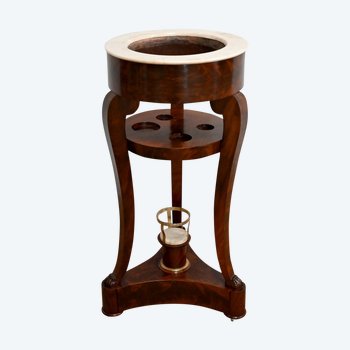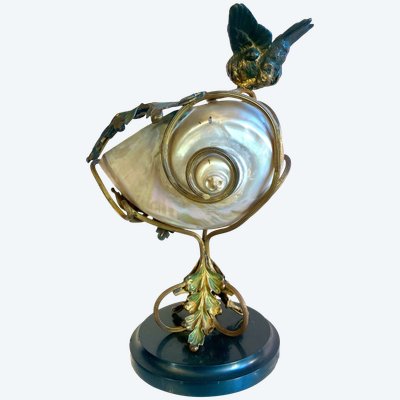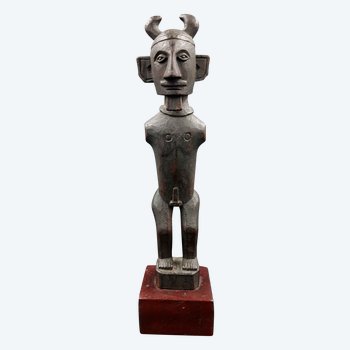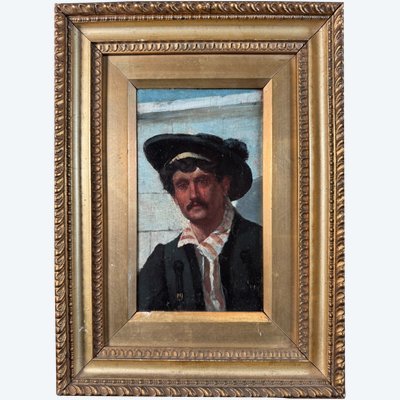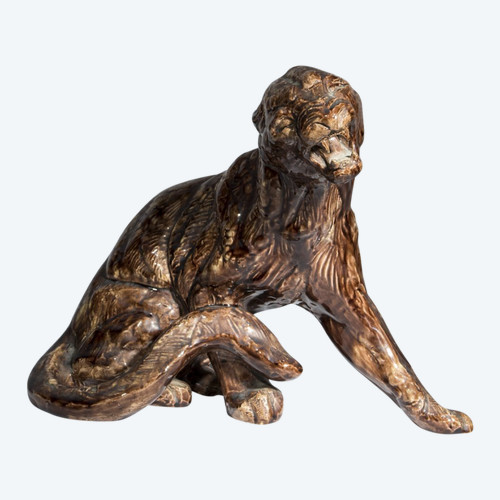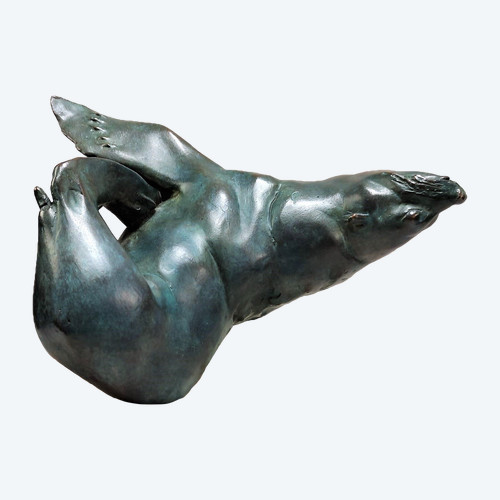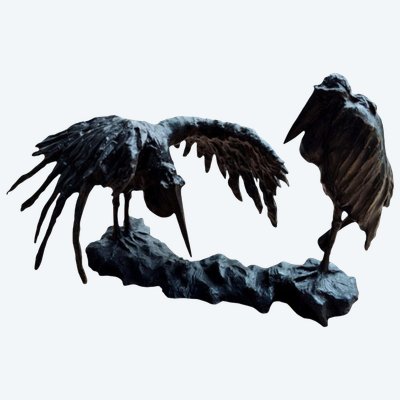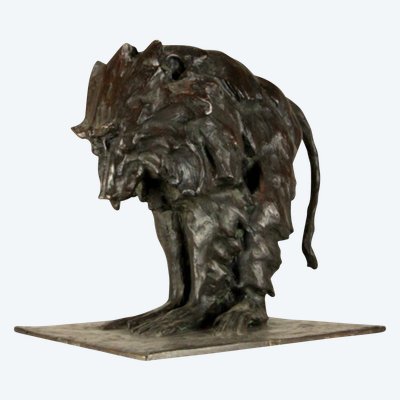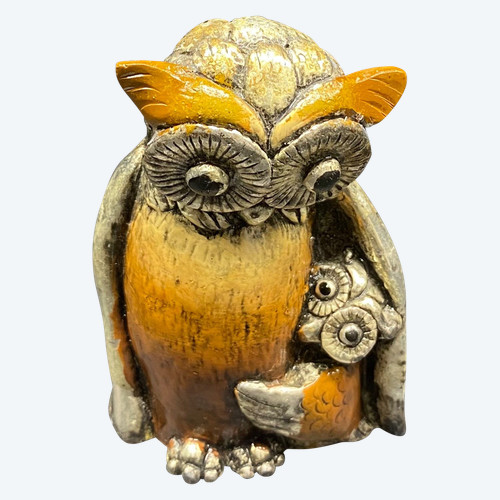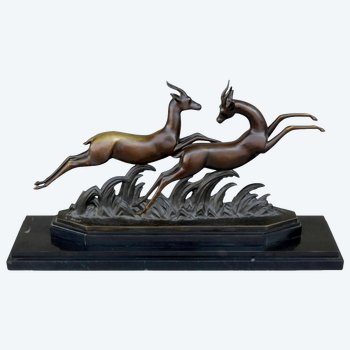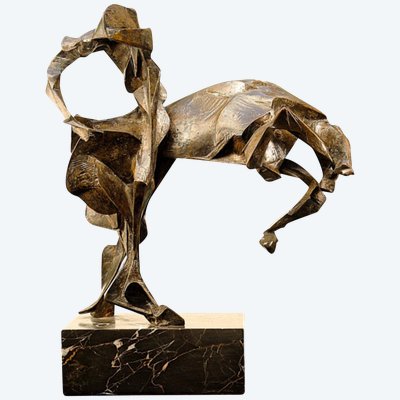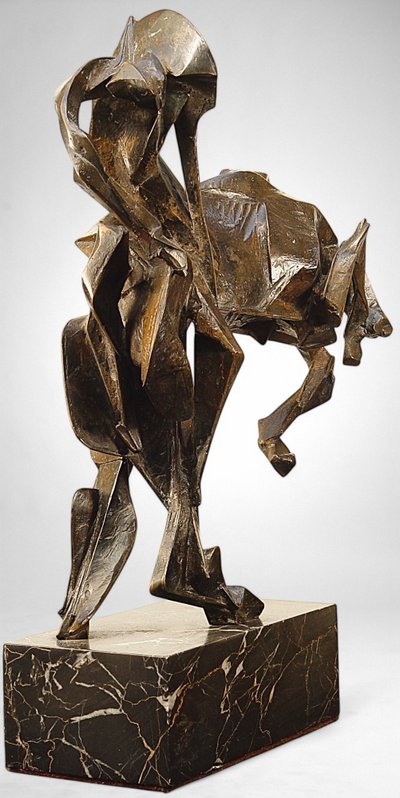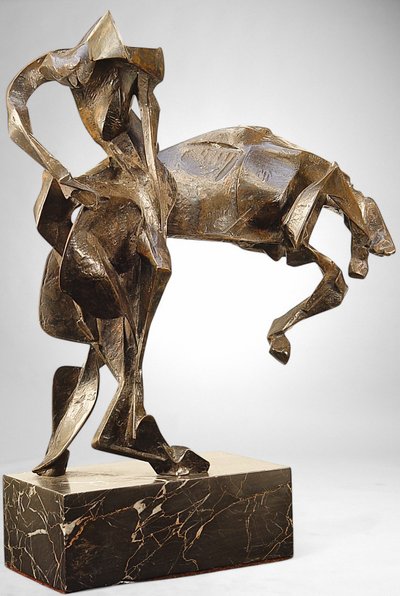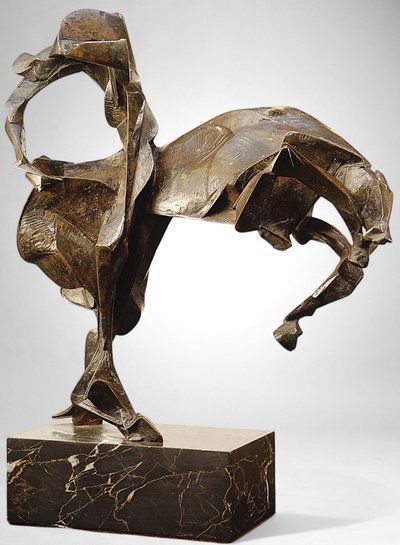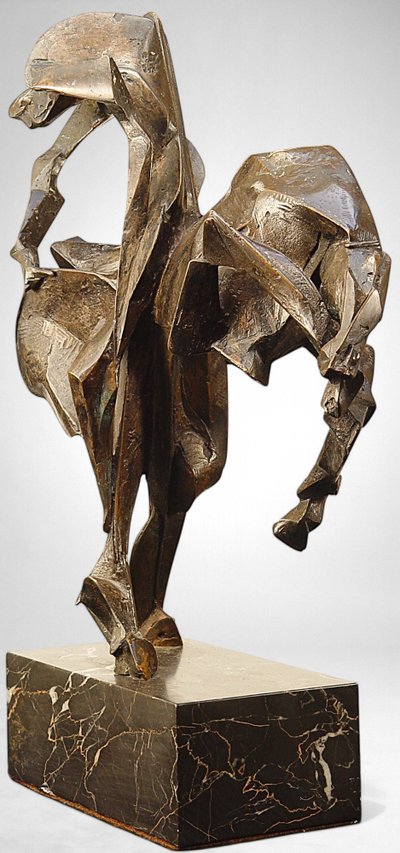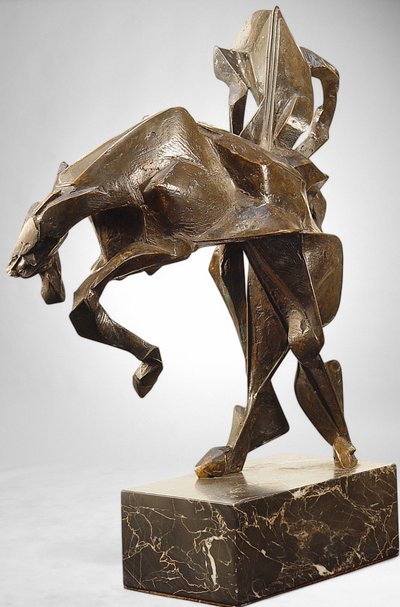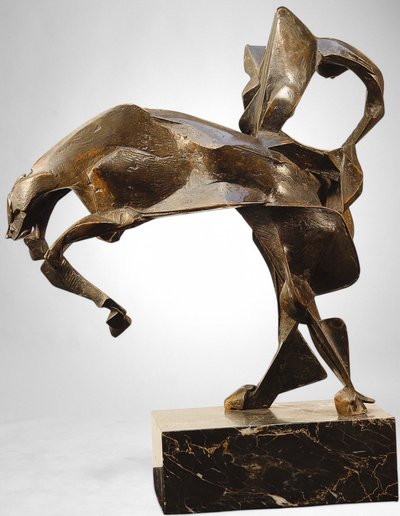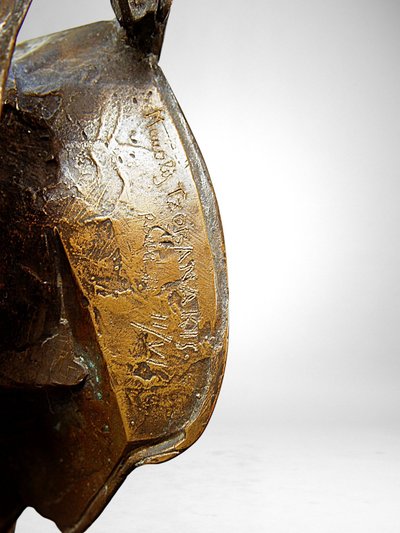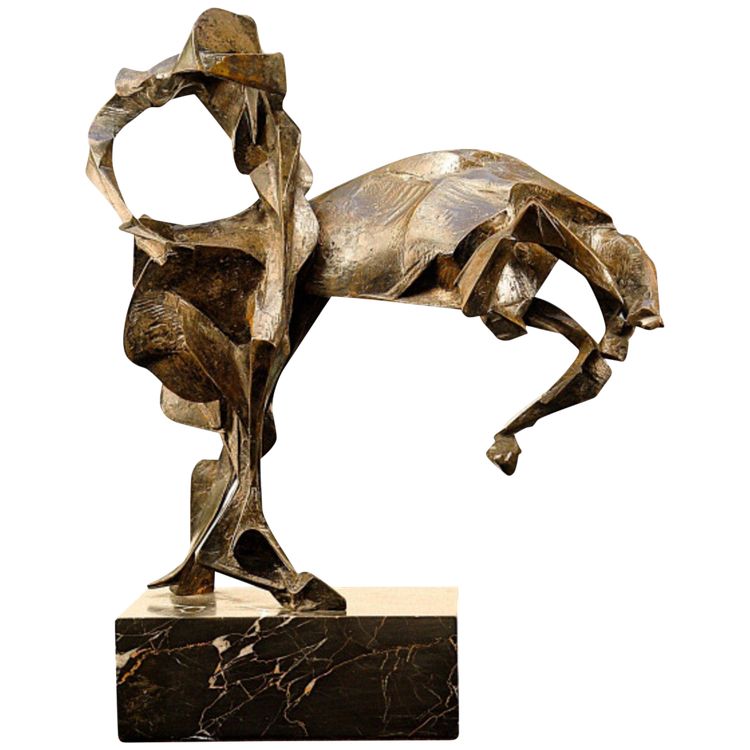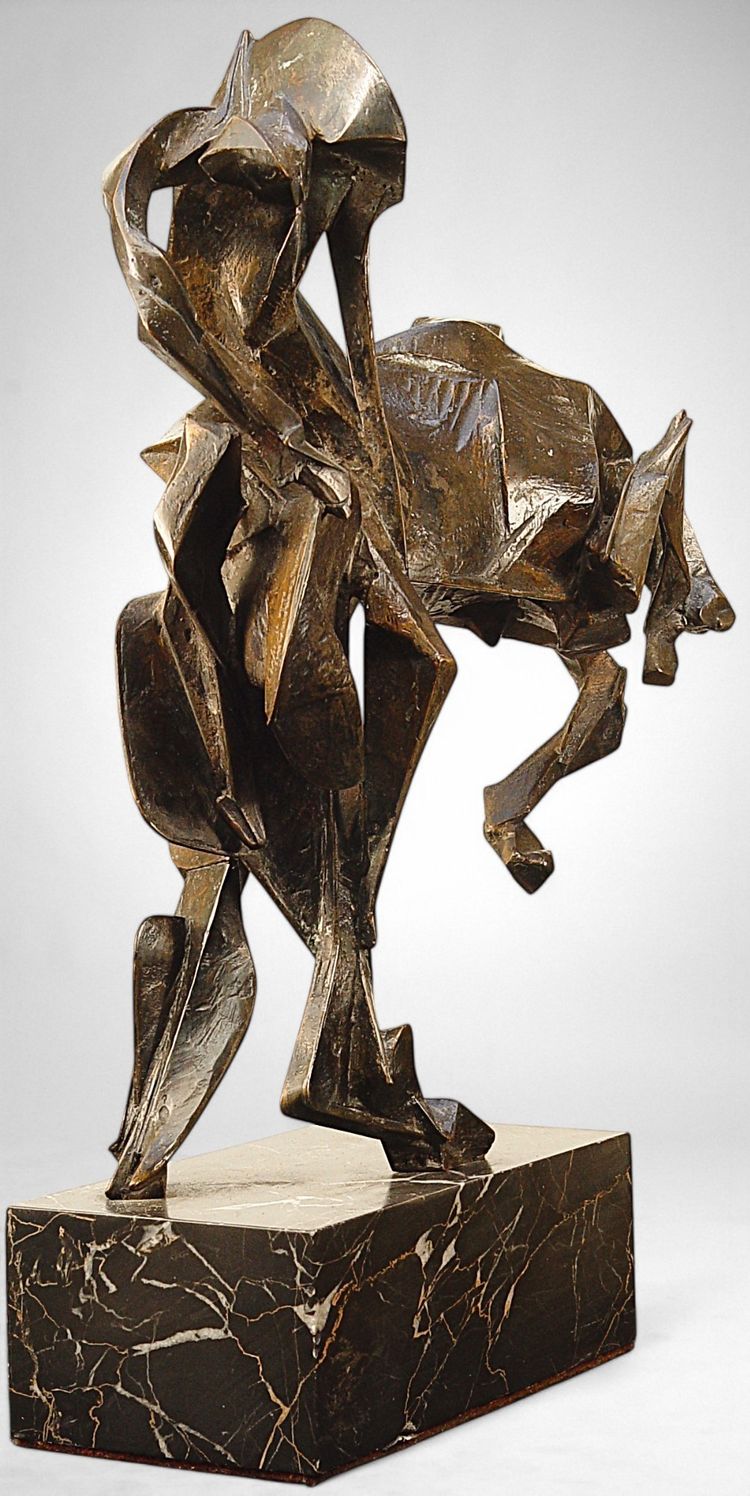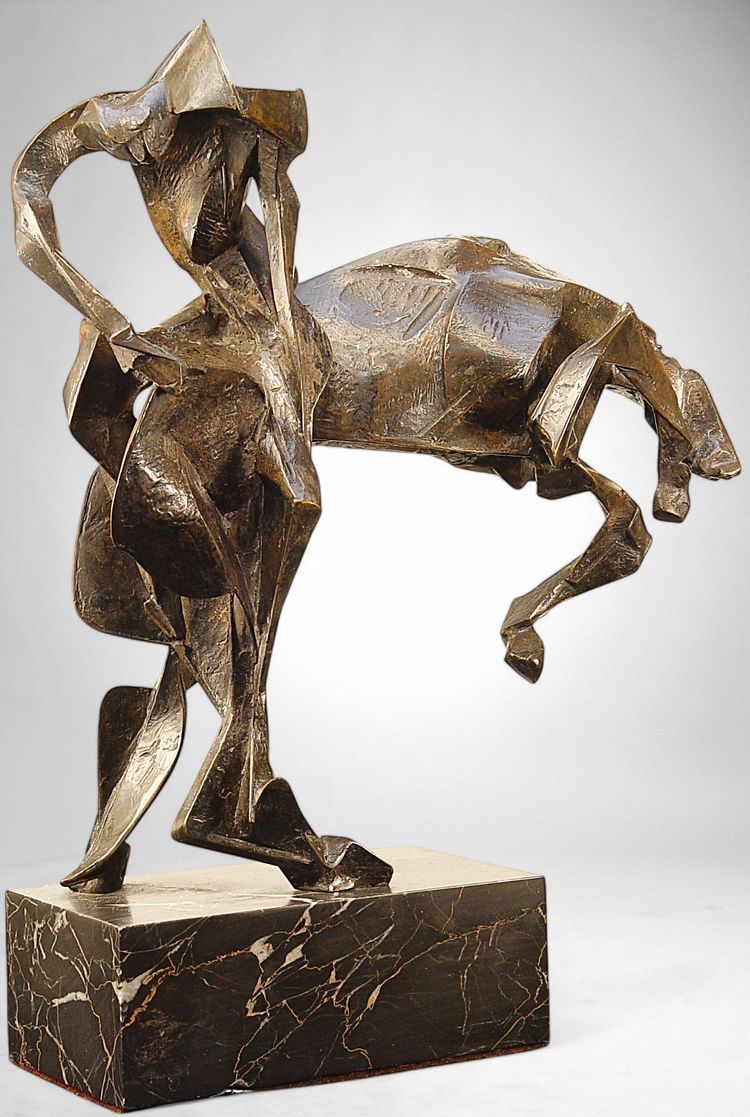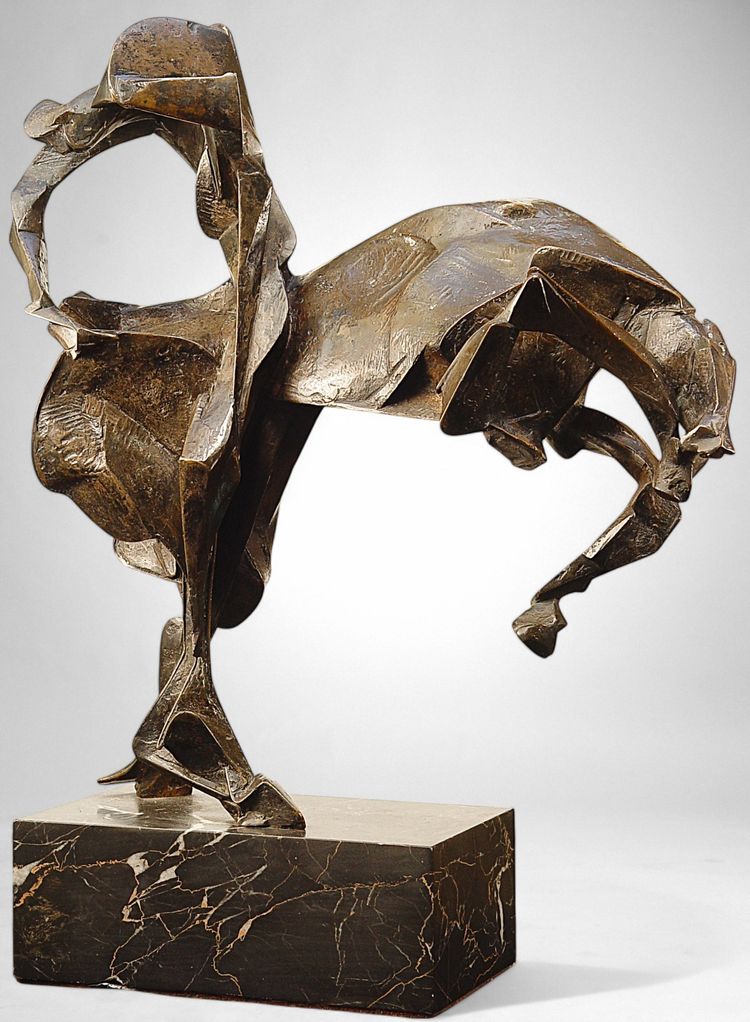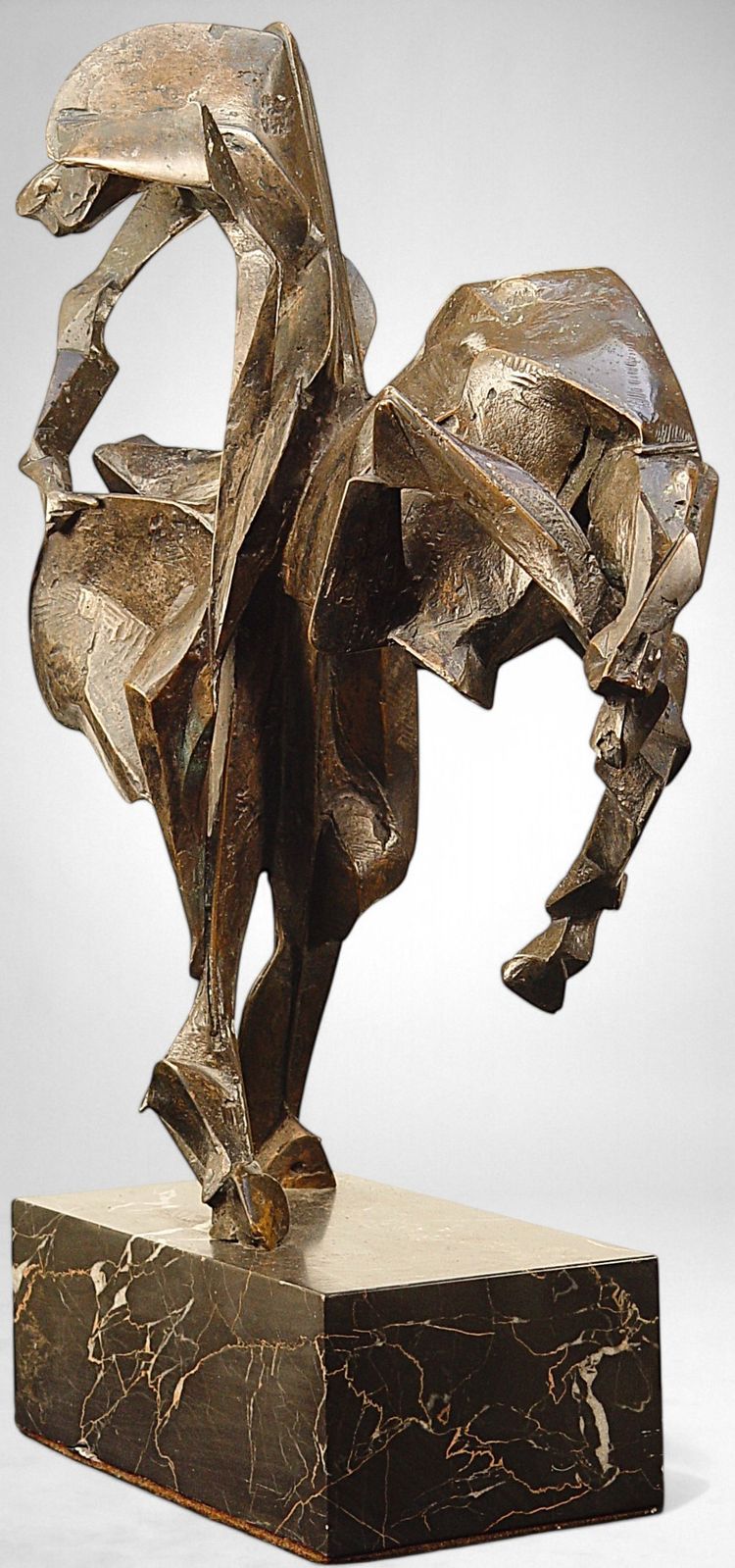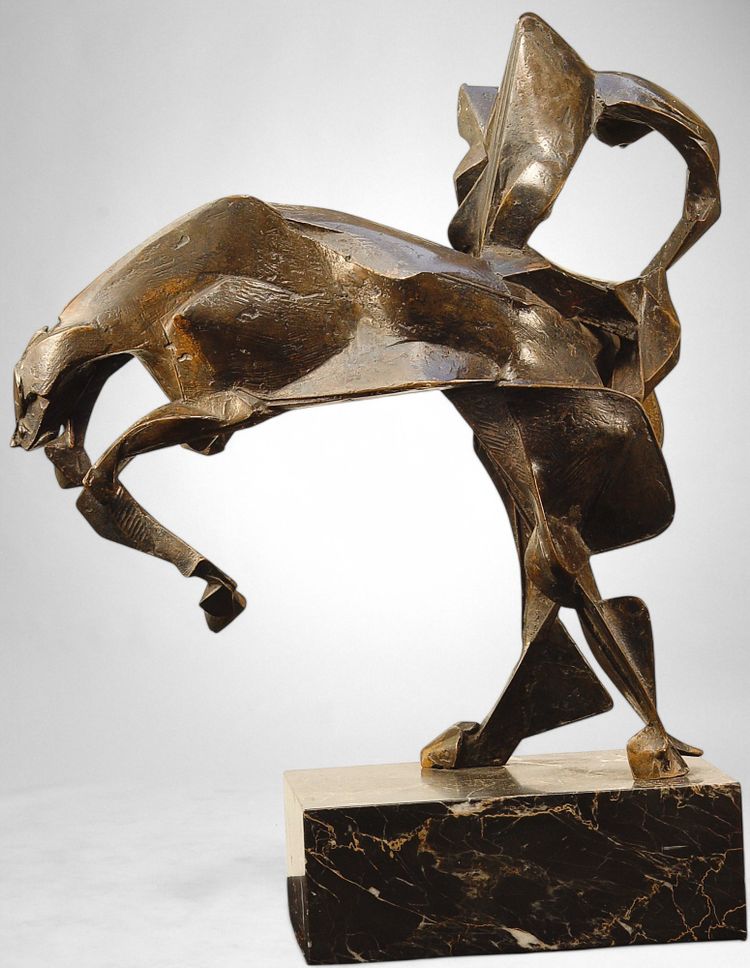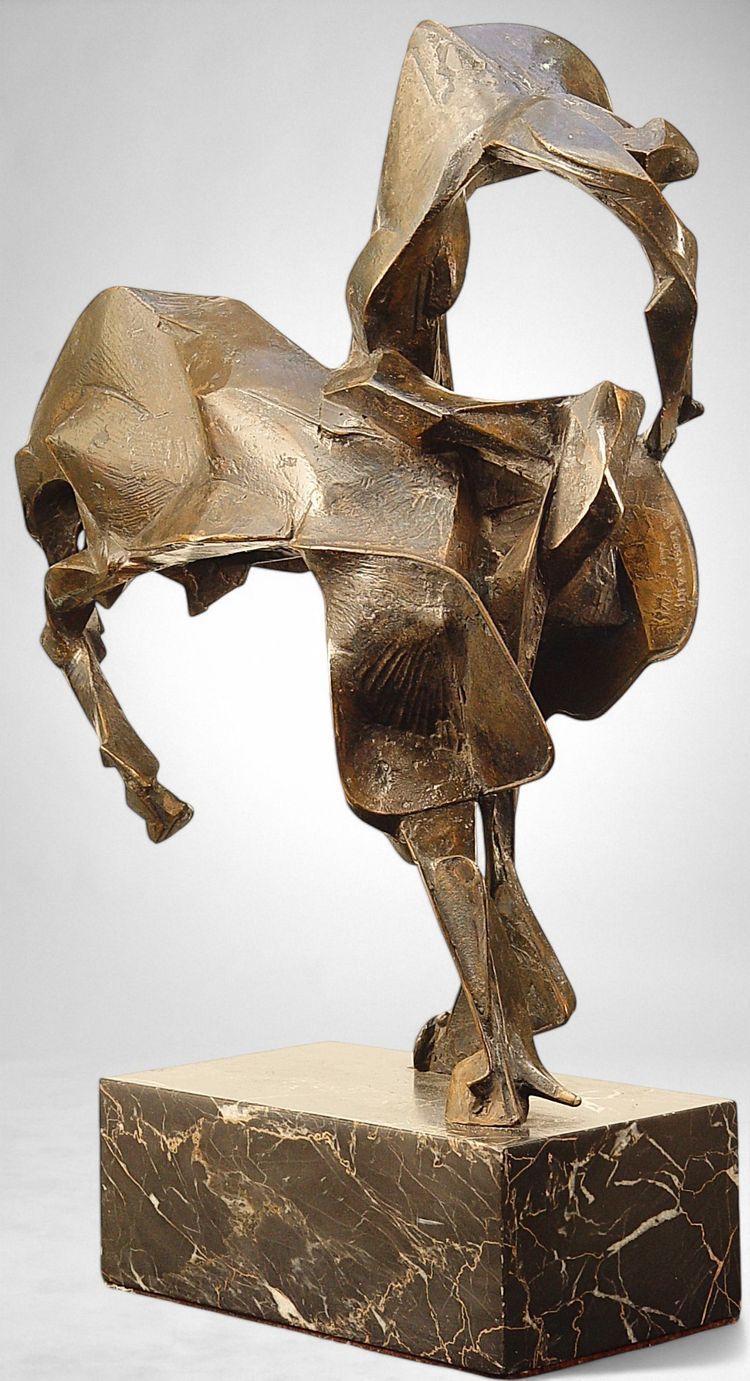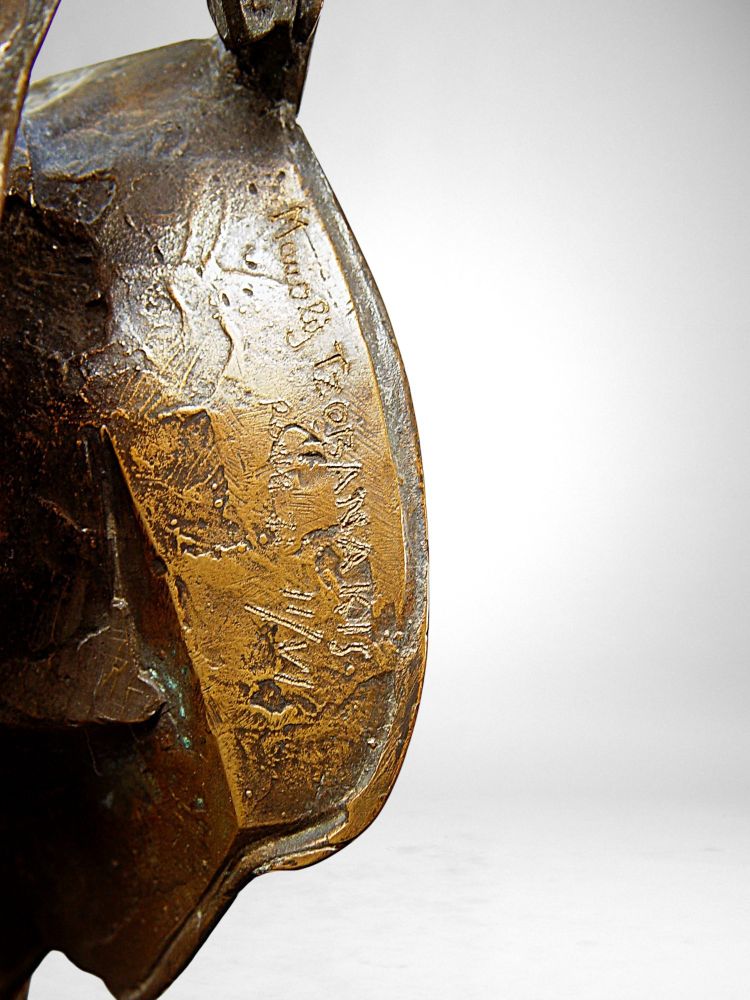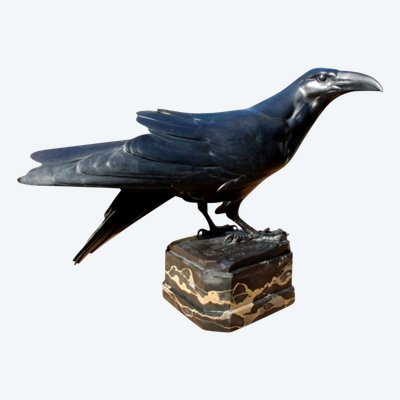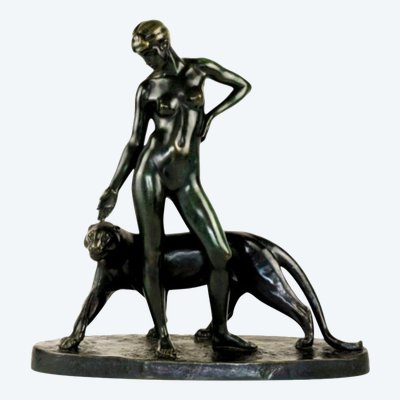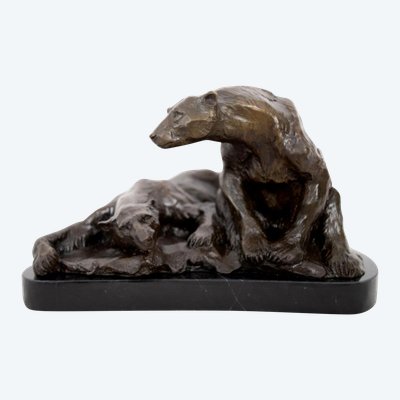This description has been translated and may not be completely accurate. Click here to see the original
In Bucephalus (1973), also known as Alexander, King of Macedon, Manolis Tzobanakis condenses into a single bronze impulse the explosive encounter between ancient myth and modern form. Only forty centimeters high, the sculpture nonetheless exudes a striking monumentality, born of the strength of its composition and the power of its abstraction. This early work vividly illustrates the Cretan sculptor's fusion of mythological language and a fragmentary, Cubo-Futurist-inspired aesthetic.
Seen from all angles, the sculpture reveals a constant tension between solids and voids, between sharp thrusts and interlocking surfaces. The horse's body—its hindquarters thrust into the air, its shoulders contracted in a movement of rejection—is fragmented into angular, almost crystalline volumes. The musculature, far from academic realism, is conveyed by planes that seem to explode while tightening in on themselves, capturing momentum, resistance, the suspended moment of domination.
Alexander is not represented with anatomical precision: he emerges from the forms themselves, arm outstretched in an arc, torso twisted, legs launched into the momentum. Everything is tension, rhythm, and abstraction. The bronze surface, marked with striations and tool marks, captures the light in a vibrant texture. There is no decorative polish here: Tzobanakis favors an expressive, almost archaic roughness, where each facet still seems to bear the imprint of the foundry fire. The patina, with its dark hues oscillating between burnt ochre and antique bronze, reinforces this impression of a mythical object, halfway between relic and modern vision.
The composition develops centrifugally, like a whirlwind of opposing forces. The rider's raised arm echoes the arched back of the mount, merging the two figures in a single movement. The anchoring in the black marble base, massive and severe, stabilizes this controlled imbalance.
The legacy of modern Italian sculpture clearly shines through here. Tzobanakis, trained in Florence and then Rome, seems to be in dialogue with Boccioni's research, particularly in his treatment of movement as a vector of form. But where Boccioni celebrates technological impetus, Tzobanakis infuses his abstraction with symbolic and political density.
Created following the 1973 student uprising against the colonels' dictatorship, Bucephalus becomes a tale of resistance: the untamed horse represents the brutal and authoritarian forces; Alexander—the only one capable of controlling them—embodies courage, freedom, and the rebellious Greek people. The ancient myth thus becomes a contemporary metaphor, a sculpted tale of a people in struggle. The work is part of a larger series devoted to the theme of the horseman (1972–1979), a dual symbol of power and mastery. With Bucephalus, the culmination of this series, Tzobanakis asserted a new sculptural voice, both political and poetic, which propelled him onto the European stage. This bronze, which undoubtedly contributed to his gold medal at the Ravenna Biennale in 1979, marked a decisive turning point in his career.
Now housed at the National Glyptothek in Athens (inv. Π.4446), the work remains one of the major milestones in his oeuvre, combining formal precision, symbolic density, and a sculptural vitality characteristic of Tzobanakis's aesthetic.
Ref: J7TTSCFY82
 Art Nouveau Mounted Shell, 19th Century
1.200 € EUR
Art Nouveau Mounted Shell, 19th Century
1.200 € EUR
 Ring, Gold And Amethyst.
680 € EUR
Ring, Gold And Amethyst.
680 € EUR

